Masterpiece Story: Portrait of Madeleine by Marie-Guillemine Benoist
What is the message behind Marie-Guillemine Benoist’s Portrait of Madeleine? The history and tradition behind this 1800 painting might explain...
Jimena Escoto 16 February 2025
3 February 2025 min Read
The portrait of Elisabeth of Valois by Sofonisba Anguissola depicts a beautiful young Queen of Spain. However, while the imagery is intriguing, the friendship between the artist and sitter is fascinating. At the Spanish court, these two women made a formidable team. Elisabeth spent her time crafting a royal image while Sofonisba built her reputation as a court artist.
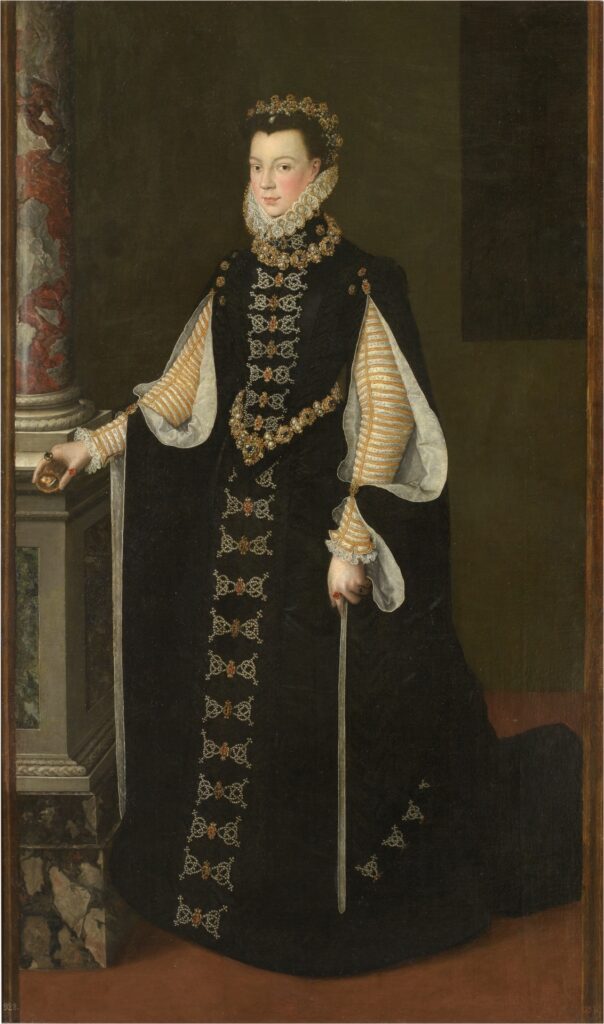
Sofonisba Anguissola, Elisabeth of Valois Holding a Portrait of Philip II, 1561-1565, Museo del Prado, Madrid, Spain.
Sofonisba Anguissola’s painting, Elisabeth of Valois holding a Portrait of Philip II, is currently at Museo del Prado in Spain. Elisabeth commissioned the portrait while at the Spanish court in Madrid between 1561 and 1565. The painting depicts Elisabeth holding a miniature portrait of her husband, Philip II, the King of Spain. This masterpiece is a testament to not only the artistry of the painter, Sofonisba, but also to the pair’s friendship.
The focal point of the portrait is Elisabeth, standing in the center of the composition. She stands, leaning her right arm on a column while holding a miniature portrait. The Prado Museum states this miniature is one of two that Elisabeth owned of Philip; Sánchez Coello painted the other one. While there is speculation about what this portrait represents, evidence points to symbols of love, dependence, and loyalty to her husband, the King of Spain.
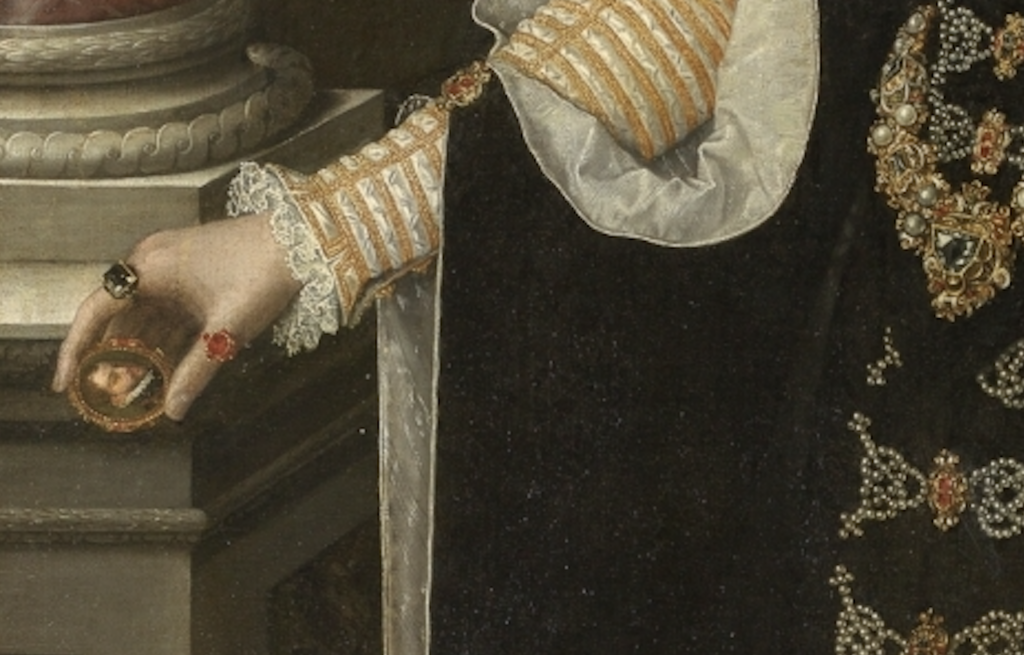
Sofonisba Anguissola, Elisabeth of Valois Holding a Portrait of Philip II, 1561-1565, Museo del Prado, Madrid, Spain. Detail.
Her jewelry might be the most exquisite feature in this portrait. She wears a large golden necklace embellished with white pearls and emeralds. On top of each shoulder, where the black gown opens to her sleeves, are golden pendants enameled with rubies. A front placket, hand embordered with patterns of pearls, decorates the front of her bodice and follows her skirt. There are twenty pearl sections, each comprising approximately a hundred pearls, totaling over two thousand. Each pearl section features a gold jewel embedded with rubies and emeralds. But it was the artist who was able to showcase these jewels magnificently. So who was Sofoinsba Anguissola?
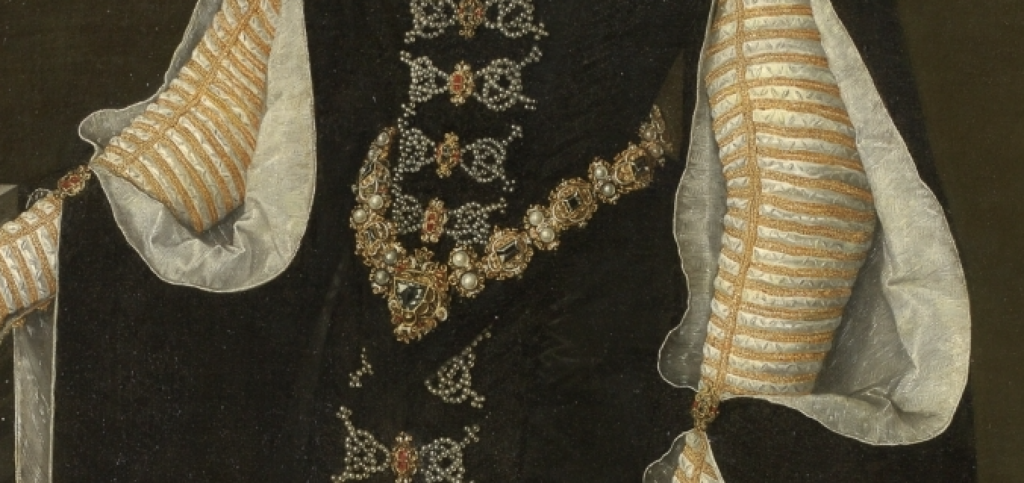
Sofonisba Anguissola, Elisabeth of Valois Holding a Portrait of Philip II, 1561-1565, Museo del Prado, Madrid, Spain. Detail.
Sofonisba Anguissola was a woman artist who worked during the Renaissance. Because of her family history and their connections with nobles, she was allowed to study art with professional artists. Around age 15, she was first trained by Bernardino Campi and then by Bernardino Gatti in 1549. They taught her portraiture skills, eventually leading to her fame in the court of Philip II. Although she was well known for her artistic skills, her father and the Anguissola name gave her enough attention for the King of Spain to hire her at court, where she met Elisabeth of Valois.
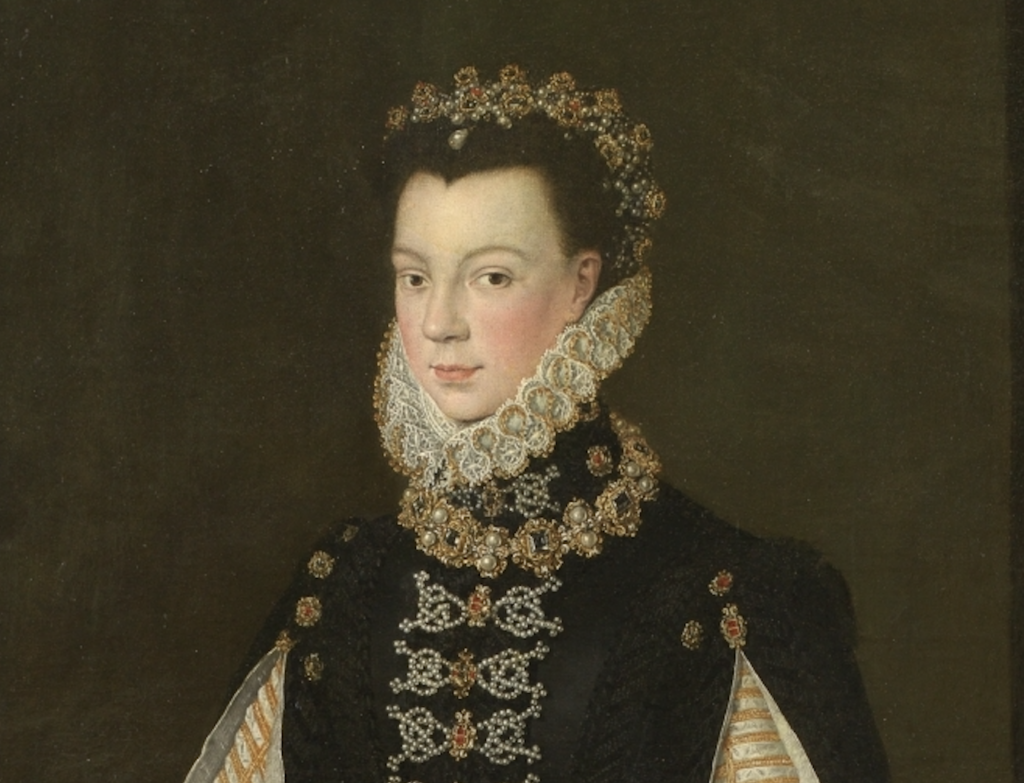
Sofonisba Anguissola, Elisabeth of Valois Holding a Portrait of Philip II, 1561-1565, Museo del Prado, Madrid, Spain. Detail.
When Sofonisba arrived at the Spanish Court in 1559, she became a lady-in-waiting to Philip II’s third wife, Elisabeth of Valois. Elisabeth was the daughter of Catherine de Medici, a well-known patron of the arts. Anguissola was not only her lady-in-waiting but also taught Elisabeth how to draw and paint. Although it is well known that Elisabeth preferred to be the subject of paintings rather than the artist.
Luckily, Anguissola arrived at the Spanish court during a significant time for the Spanish portrait. Famous painters such as Sánchez Coello and Antonis Mor were creating works within this genre. Since her work was so impressive, Sofonisba stayed at the Spanish court and produced portraits of the royal family from 1559 to 1573.
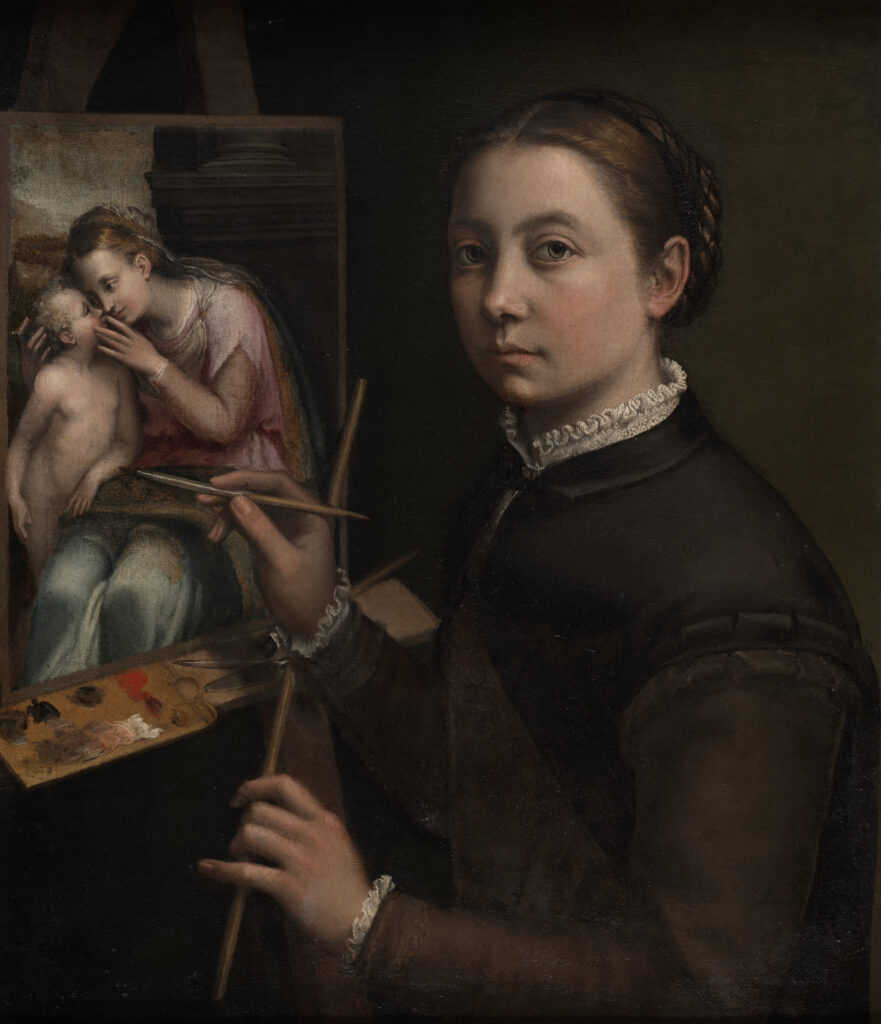
Sofonisba Anguissola, Self-Portrait at an Easel, 1556, Museum Castle in Łańcut, Poland. Wikimedia Commons (public domain).
Sofonisba became one of the few women artists mentioned in Vasari’s second edition of the Lives of the Most Eminent Painters, Sculptors, and Architects in 1568. She received the most significant literary praise of any woman artist during her lifetime, mainly due to her admirable skill as a portrait painter.
DailyArt Magazine needs your support. Every contribution, however big or small, is very valuable for our future. Thanks to it, we will be able to sustain and grow the Magazine. Thank you for your help!